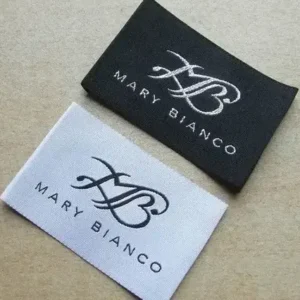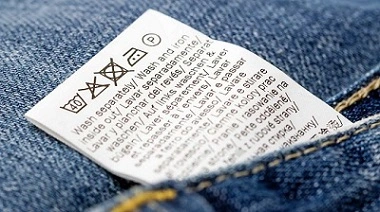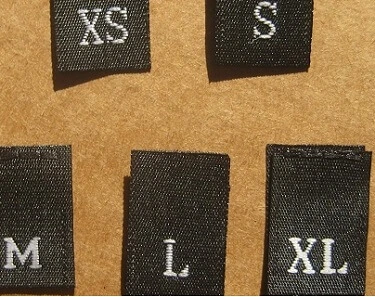Different Types of Labels Used in the Garments Industry
The garment label refers to a separate component attached to a garment. This contains some necessary information about that dress. For example, the size of the garment, type of fiber, care information, country of manufacture, trademark, etc. It is essential to have a label on the garment for export. No garment may be sold without some sort of label attached to it. Fiber content labeling is mandatory; size labels are required. In this article, we discuss Different Types of Labels Used in the Garments Industry.
A label is more than just a fabric that communicates directly with the customer. It’s something like getting the customer’s full attention. Care labeling is generally a voluntary rather than a legal requirement, but its use is on the increase as retailers try to ensure that garments do not fail the consumer as a result of incorrect action. Different Types of Labels Used in Garments Industry in the following:
Garments product labels have six main uses:
- Informing consumers at the time of purchase, so that better decision is made.
- Provide a service to customers about product care.
- A design feature, which gives the product a brand identity as part of the marketing strategy.
- stating that the product conforms to certain environmental standards
- Specifies that the product works in accordance with certain environmental standards.
- Identify flammability risks to help reduce injury.
There are mainly two types of labels:
- Main label
- Sub label
Main label:
The main label contains the brand name or the buyer’s brand logo such as C&A, Tom Tailor, Zara etc. The brand name is an emotional satisfaction about the product from the customer’s point of view. Brand labels play a big role for customers because only customers know the brand and they buy the brand.

Sub label:
- Care label
- Size label
- Price label
- Composition label
- Special label
- Flag label
What are the Different Types of Labels Used in the Garments Industry?
Care label:
Care guidelines are small solutions to big problems. Care labels provide guidelines about consumer clothing care and the best cleaning methods to use for a particular combination of fabric, thread decoration, and construction techniques. Following the care instructions, the labels are an assurance that the look and fit of the garment will be maintained after repeated cleaning treatments. Laundry symbols are sometimes included to indicate how a particular item should best be washed, dried, cleaned, or ironed. Or information regarding material composition.

Size label:
The label of the car indicates the size of the garments. Size labels indicated as S, M, L, and XL. The customer knows which size fits those best. When a customer goes shopping, he chooses the clothes that suit him according to his size.

Composition Label (Fiber Content):
All the fibers included in the functional significance garment must be listed, but non-functional fibers need not be listed if their density is below five percent in the final garment. Instead, these fibers can be declared together as a total percentage under the heading “other fibers”.
Also, decorative items such as braids and belts do not need to be listed if less than 15 percent of the clothing is integrated. If the embellishment in a textile product does not exceed 5 percent of its total composition, it may be omitted, but the term “Exclusive of Ornamentation” should be listed below the label. The linings should be labeled separately and all textile materials should be listed under their generic name instead of their trade name.
One survey found that about two-thirds of consumers, 63 percent, said fiber content was important in their purchasing decisions. In general, most consumers who check labels say they are looking for cotton at 72 percent. This is probably because 81% of consumers say that cotton is the preferred fiber or fabric they wear.
Special label:
These labels are usually attached to the clothes to attract customer attention to the main feature of the garment. It is maybe to say 100% cotton, or Organic Fabric, etc.
Flag label:
The flag label attaches completely to the product and when peeled extends like a flag, leaving no strong residue. The label is secured to the product to form a flag and the rest displays the extending label as the flag. Flags can be printed on both sides to provide additional information space. It is attached to the side seams of the lower parts of the garment.
Price label:
The price label indicates the price of the garments, it is also known as the price tag.
Labeling gives information about garments of band name, size, price, care information, and material composition. Correct labeling would give correct information to consumers as they buy clothing seeing the label. All these are Different Types of Labels Used in the Garments Industry.
- You may love to read: What is the RN Number on the Clothing Label?
